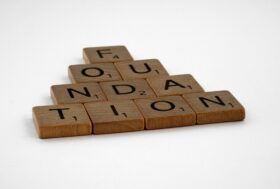Multi-modal observation: A reflection on a multi-faceted approach to teacher observation

Observation is not a term that is often met with excitement or jubilation by teachers across the profession, even though there is an acknowledgement of the impact that it can have on teaching practice when done well (Bill & Melinda Gates Foundation, 2013; EEF, 2017), and when it is focused on teacher development (Kraft and Papay, 2014). When investment is made in the development of teacher pedagogy, job satisfaction and teacher retention increase, particularly for colleagues who are new to the profession.
The schools in our multi-academy trustAbbreviated to MAT, a group of schools working in collaborat... More (MATMulti-academy trust - a group of schools working in collabor... More) have developed their understanding of the practice of observation, resulting in a multi-modal approach to teacher observation as a means of developing effective practice. This article explores the experience we have of eight different observation tools that we have found to be beneficial for developing an effective teacher learning culture.
Before each observation mode is discussed, it is important to be clear on our rationale behind observation. It is not a tool to be used to catch people out. Rather, observation is a means for the identification and subsequent improvement of teacher pedagogy. Observations within our MAT fall into one of three categories: diagnostic, holistic, and judgmental, (for a full discussion see Grove, 2018). Diagnostic observation enables senior leaders to establish where support is required. Where such support is needed, holistic observation serves as a tool in developing teacher pedagogy. Finally, judgmental observation – traditionally seen within the process of performance reviews – enables the teacher improvement cycle to begin afresh with an evaluation of what has been achieved over time. While this order is helpful, it is by no means restrictive.
Let us now turn to the eight modes of teacher observation that have helped our trust to develop an effective teacher learning culture:
1. Every class – every day (diagnostic)
The first step in the observation process is every class – every day observations by senior leaders. The importance of regular observation of all classes has been utilised as a low level means of regularly observing teaching and learning. This diagnostic tool enables senior leaders to identify examples of excellent practice, as well as to identify potential areas of focus.
2. One-to-one experienced peer (holistic)
One-to-one experienced peer observations are mostly informal observations of a colleague for a particular focus: this might be to deliver maths following the school’s methodologies; to manage transitions effectively; or even to develop pedagogic content knowledge. This is a simple yet effective tool that encourages a peer-colleague learning culture.
3. Guided lesson: Single learner-observer (holistic)
Sometimes colleagues who require support to improve are simply unable to spot the aspects of their practice that they are not employing by observing practice alone: they require a guide. A guided lesson involves a learner-observer being guided by a more experience guide-observer in order to point out the nuances of effective teaching and learning. While this has doubled the amount of people in the room observing, the focus remains on the teaching and learning rather than the teacher. This simple yet important distinction regarding observation focus is key for developing a collaborative learning culture where teachers are willing to become vulnerable in front of their colleagues.
4. Guided lesson: Multiple learner-observers (holistic)
In 2014, schools within the MAT had the pleasure of receiving training from Sugata Mitra, who is notable for his Build a School in the Cloud TED talk (Mitra, 2013). As part of this observation, a large group of learner-observers formed a horse-shoe around the room to observe his session. It was noted that the dynamics of having multiple people in the room had not changed from having just two people (Grove, 2018). Later developments found that the use of earpieces could allow for a guide-observer to guide all learner-observers through the significant learning within the lesson (Scheeler et al., 2006; Rock et al. 2012). Now sets of earpieces are utilised to carefully and skillfully guide large groups who are observing an aspect of teaching and learning within a lesson.
5. Research lessons (holistic)
Within the MAT, we have embedded a system of Professional Learning Communities (PLCs): meetings of colleague-peers who come together once a week for a discussion on how to improve teaching and learning (Hairon, 2012). As a tool for discussion within PLCs, teachers record an element of their teaching as part of a research lesson. Colleague-peers then observe the recording, either within PLCs and have a facilitated discussion on what has been seen and how to learn from and improve practice, or with a guide-observer who can help develop the practice of an individual. The mutual vulnerability of this exercise has been helpful in developing an effective teacher learning culture.
6. Team teaching (holistic)
There are times when facilitating teacher improvement requires a more bespoke course of action. Team teaching is a long-standing method of improving teacher practice. Yet it is understood in multiple ways. We define team teaching as the process of dividing the lessons into distinct sections whereby the role of observer/observed is simultaneously reciprocated. This allows the learner-observer to both watch and be watched within one session.
7. Live-coaching lessons (holistic)
An alternative personalised course of action is live-coaching. Within live-coaching lessons, the observed is discretely coached through an earpiece by a more experienced peer within the room. The deployment of earpieces allows for in-the-moment corrections and directions to be given, without fear of embarrassment in front of a class. This mode of feedback encourages a pedagogy of self-reflection where feedback immediately sticks (Preston and Younie, 2016).
8. Formal observation (diagnostic/judgmental)
Finally, observation as one part of performance management comes in. This observation also enables the teacher improvement cycle to begin afresh with an evaluation of what has been achieved over time. The findings of this observation from an appraiser should not elicit any surprises, should the previous observation opportunities mentioned above be employed to develop an effective teacher learning culture.
Summary
The use of observation is a hugely undervalued tool in developing an effective teacher learner culture. To be used effectively, it requires the application of a number of qualities: vulnerability, trust and collegiality. When observation is employed in its variety of forms, it stands as a hugely impactful tool for developing a teacher learning culture within our highly skilled and professional workforce. The more effectively we can guide and support our teachers to promote an effective learning culture, the more our teachers can positively impact student learning outcomes.
References
Barber M and Mourshed M (2007) How the world’s best-performing schools systems come out on top. London: McKinsey & Company.
Bill and Melinda Gates Foundation (2013) Ensuring Fair and Reliable Measures of Effective Teaching: Culminating Findings from the MET Project’s Three-Year Study, MET Project, Policy and Practice Brief. Available at: http://www.edweek.org/media/17teach-met1.pdf (Accessed 01 November 2018).
Grove J (2018) Improving Teaching and Learning. London: Quality First Education Trust. Available at: https://www.belleville-school.org.uk/teaching_school/research_development (Accessed 01 November 2018).
Hairon S and Dimmock C (2012) Singapore schools and professional learning communities: Teacher professional development and school leadership in an Asian hierarchical system. Educational Review 64(4): 405-424.
Kraft M A and Papay J P (2014) Can Professional Environments in Schools Promote Teacher Development? Explaining Heterogeneity in Returns to Teaching Experience. Educational Evaluation and Policy Analysis.
Mitra S (2013) Build a School in the Cloud. TED2013. Available at: https://www.ted.com/talks/sugata_mitra_build_a_school_in_the_cloud#t-392828 (Accessed 1 November 2018).
Preston C and Younie S (2016) Innovations in professional development: real-time, in-ear coaching. Research Report #2. Available at: https://mirandanet.ac.uk/wp-content/uploads/2016/09/Iris-Innovations-in-Professional-Development-FINAL.pdf (Accessed 23 January 2019).
Rock M, Gregg M, Gable R et al. (2012). Time after time online: An extended study of virtual coaching during distant clinical practice. Journal of Technology and Teacher Education 20: 277-304.
Scheeler MC, McAfee JK, Ruhl KL et al. (2006). Effects of corrective Feedback delivered via wireless technology on preservice teacher performance and student behaviour. Teacher and Special Education 29: 12- 25.
Worth J, Sizmur J, Walker M et al. (2017) Teacher Observation: Evaluation Report and Executive Summary. Education Endowment Foundation. Available at: https://educationendowmentfoundation.org.uk/public/files/Projects/Evaluation_Reports/Teacher_Observation.pdf (Accessed 01 November 2018).










